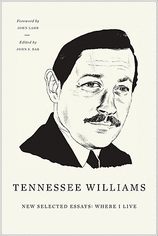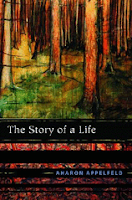 Nicholas Rombes's new book is Cinema in the Digital Age (Wallflower Press / Columbia University Press). His forthcoming book, A Cultural Dictionary of Punk: 1974-1982, will be published by Continuum in June 2009. He is professor and Chair of English at the University of Detroit Mercy.
Nicholas Rombes's new book is Cinema in the Digital Age (Wallflower Press / Columbia University Press). His forthcoming book, A Cultural Dictionary of Punk: 1974-1982, will be published by Continuum in June 2009. He is professor and Chair of English at the University of Detroit Mercy.Earlier this week I asked him what he was reading. His reply:
I used to make distinctions between academic and non-academic reading, but not any more. Over the past few years, I've found that most all good writing, on some level, is a form of theory, whether it be Nathaniel Hawthorne's Pierre, or Mark Danielewski's House of Leaves. Both of those books, in particular, are novels, but also theories about the forging together of arbitrary signs in order to create the illusion of reality. But right now, I'm still working my way—in fits and starts—through William T. Vollmann's mammoth, seven-volume study of violence Rising Up and Rising Down, published in 2003 by McSweeney's books. Right now I'm on "The Moral Calculus" Vollmann's recklessly, brutally, not-so-funny attempt to logically, empirically, almost mathematically answer the question, "When is Violence Justified?" Sections include "When is Violent Defense of Honor Justified?"Visit Nicholas Rombes's websites for Cinema in the Digital Age and A Cultural Dictionary of Punk: 1974-1982.and "When is Violent Defense of Race and Culture Justified?" Vollmann is one of those writers tagged as "postmodern" in the sense that his excessiveness seems to be a strategy for coping with and encompassing the sheer size of reality.
This may seem like a silly thing to say, I know, for isn't reality always the same size? Maybe it's just that there are so many representations of reality today, on so many mediums, so many screens, that writers like the late David Foster Wallace and Roberto Bolaño, and William Vollmann and Dave Eggers write big books to try to make order out of the noise and chaos of our times. I know that this runs counter to the critique of "postmodern" writers who are often criticized for hiding the fact that they have little to say by their digressions, footnotes, and sprawling, unfocused narratives. But this misses the mark entirely. Writers like Vollmann craft narratives whose sprawling structures are really maps that attempt to cover the ever-expanding information territory of our time.
I've also just finished a book of strange and savage and tender poems by Brigit Pegeen Kelly called The Orchard, published by BOA Editions in 2004. For a reason that's hard to explain, her poems helped meduring stretches of writing A Cultural Dictionary of Punk, maybe because at the heart of the poems is a sort of terrifying blankness and withholding of judgment or perspective. "The Wolf" opens with these lines:
The diseased dog lowered her head as I came close, as if to make
Of her head a shadow, something the next few hours
Would erase, swiftly, something of no account.
Kelly's poems are long of line, and read like highly compressed short stories. Their menace is not only in their content, but in their radical shifts between concrete and abstract. In an age when "nature" is ever-increasingly cordoned off as recreation areas, parks, places to go to relax and get away from it all, Kelly's poems remind us of the blank cruelty in places like the meadow, the field, the forest, the orchard.Finally, I just finished a new novel by Aaron Gwyn, The World Beneath. I'd not heard of him before, and I'm not sure how I came to order this, but I'm glad I did. It's difficult to talk about the book without giving away the plot, but its elements involve a half-Mexican, half-Chickasaw boy who disappears in rural Oklahoma, a small-town detective who grows obsessed with the case, and a hole that appears on someone's property that appears to have no bottom. The tone of the novel is unique, reminiscent at times of Edgar Allan Poe, Cormac McCarthy, and even Haruki Murakami. It's the sort of book you read in small doses, because you don't want it to end.
--Marshal Zeringue


















































